Hake is an elongated and thin fish, spindly shaped, with spiny dorsal fins, eyes that pop out and a highly protruding lower jaw. The head and back of hake are a steel gray color, the belly is silvery white. Hake can reach lengths of 30″ (75 cm) and weigh up to 8 lb (3.7 kg). In some specimens, the body can weigh up to an impressive 55 lb (25 kg).
There are 12 hake species currently known.
The majority of hake fishing is registered primarily in the Southwestern part of the Atlantic Ocean (Argentina and Uruguay), the Mediterranean and Black Sea (Italy, Spain, Portugal, Greece and France), in the southern regions of Africa, in the Southeastern part of the Pacific Ocean (Peru and Chile).
Due to the excessive fishing of hake in the regions where it is caught, we see a drastic decline in the numbers of this fish. Fishing of hake in Europe is now significantly below historical levels due to its depletion in the Black and Mediterranean Sea. There are a number of reasons behind this decline - ecological problems, unregistered fishing, fishing of smaller specimens, unsustainable fishing.
Undoubtedly, the highest demand for hake is in Europe. Spain is the #1 consumer of hake - the average annual consumption per person is 13 lb (6 kg). Other European countries that consume greater quantities of hake are Italy, Portugal and France.
Composition of Hake

3.5 oz (100 g) of fresh hake contain 87 calories, 308 mg potassium, 83 mg sodium, 15.8 g protein, 0.4 g omega-3 fatty acids, 2.2 g fat, 0.4 g saturated fat.
Hake contains large amounts of fat-soluble vitamins, many minerals such as iodine, zinc, copper, manganese. Marine fish, such as hake, also possess many microelements such as fluorine, iron, bromine and lithium.
Choosing and Storing Hake
Hake is among the fish very easily found in larger supermarkets. It is usually sold whole, filleted and in fresh or frozen cutlets. Whenever buying fresh hake, look for a fish with shining skin and pure white meat which has no signs of scratches or blackened spots. The hake needs to smell like a fresh marine fish.
Cooking Hake
Hake is a highly preferred fish due to its delicious white meat that's low in fat. The texture of the meat can be soft or firm, its color with a pink tone. A big plus side to hake is that it has few bones that can be removed with hardly any effort. Its aroma is better expressed in comparison to other fish.
Hake is suitable for all traditional methods of cooking fish: breaded, baked in the oven or on the grill, sauteed and fried. It combines excellently with tomatoes and tomato sauce. The most suitable wines for serving dishes with hake are Sauvignon Blanc and Chardonnay.
Most commonly, hake is prepared breaded. Let us offer you a typical recipe for delicious crumbed hake.

Ingredients: 4-5 hake fillets, 2/5 cup breadcrumbs, 2 eggs, oil for frying, 2 tbsp flour, black pepper and salt.
Preparation: Cut the fish fillets into course pieces and season them with black pepper and salt. Roll them subsequently in flour, eggs, breadcrumbs and eggs once again. Fry them in highly heated oil until golden colored. Serve the crumbed hake with lemon and a garnish of your choice.
Benefits of Hake
Hake, like all other fish, provides a plethora of benefits. It is presumed that people who eat fish at least once a week decrease their risk of vision loss by 50% after they reach middle age.
There is also a strong link between consumption of fish and heart function. Fish and fish oil are highly recommended as a prophylactic against cardiovascular diseases. In hake, there are numerous amino acids that are good for the heart.
Besides everything else, the meat is abundant in vitamins from groups A, E and D. Hake is an excellent source of calcium, magnesium, selenium, zinc, iron and phosphorus. The listed vitamins are of course found in animal meat but in much smaller quantities.
Spanish scientists have carried out a study on the properties of the roe of many marine fish.
Throughout it, they've found that the greatest concentrations of the exceptionally healthy omega-3 fatty acid is found in 3 fish, one of these being hake. Deficiency of omega-3 can cause hypertension, depression, diabetes, cardiovascular problems and more.
By consuming fish, the body also produces the hormone serotonin, which is exceptionally important for mood and psychological peace of mind.
Hake meat is low in fat, making it a superb food for those on a diet.


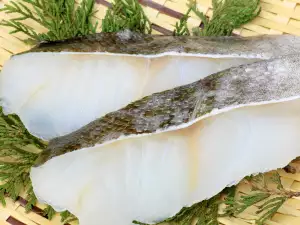

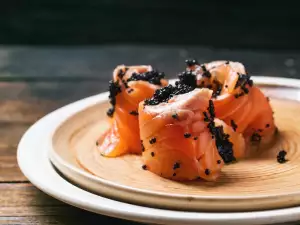
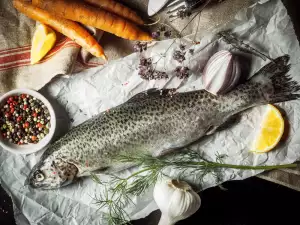
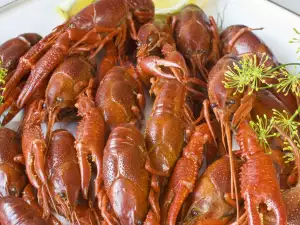





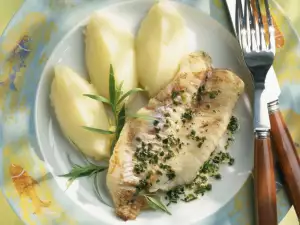

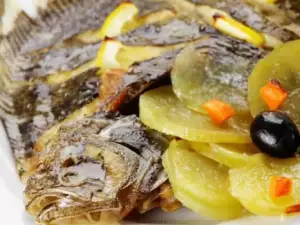
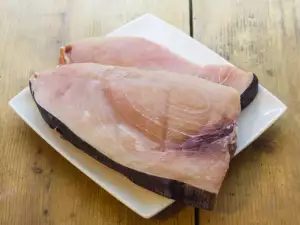




Comments